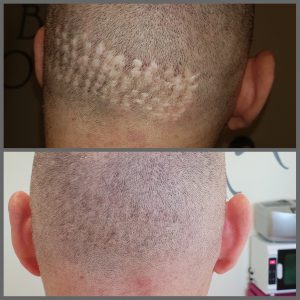
Skin toned scar camouflage
Skin Toned Scar Camouflage and repigmentation of stable vitiligo
Skin toned scar camouflage is achieved as I use skin coloured tattoo inks that I gently tattooed into the skin to achieve the most natural looking results.
This treatment is particularly effective for disguising light coloured scars, such as surgical, burn or trauma scars, acne and chickenpox scars or small areas of stretch marks.
The scars should be at least 1 year old and lighter in colour than the surrounding skin, for safe and effective scar camouflage.
(See below for more information)
How is ‘Skin Toned Scar Camouflage’ carried out by Jo Bregazzi?
What are the benefits and risks of Scar Camouflage?
Skin toned scar camouflage or ‘skin coloured tattooing’ is not an invasive procedure but I will be using needles to penetrate the skin surface and the treatment is not without risk.
The main risks include;
Slight skin irritation
Uneven pigment colour
Not achieving an exact colour match
Fading of colour over time
Scarring
Pigment migration or spreading
Patients with keloiding problems or who have developed a raised scar after surgery or a tattoo previously, may not be good candidates for this procedure and you can discuss your prior scarring with me at your consultation. Patients with active infections should wait until the infection has cleared before seeking treatment.
If you are choosing to undergo areola and scar tissue tattooing after a breast surgery, you will need to check with your surgeon before having the procedure performed.
Scar tissue accepts implanted pigment very differently to that of normal tissue and can result in uneven colouring, discomfort and keloiding (raised scarring).
It is usually best to wait until the scar tissue is mature and that can be anywhere from 7 to 12 months.
What factors could affect the results of Scar Camouflage?
There are many variables that can impact on the final results of micropigmentation which is partially determined by variations in skin type, and can also be affected by:
Natural skin tones
Individual healing ability
Medication
Skin characteristics (dryness, oiliness, sun damage, thickness, colour)
PH balance of the skin (acidity)
Alcohol intake
Smoking
Illness





















